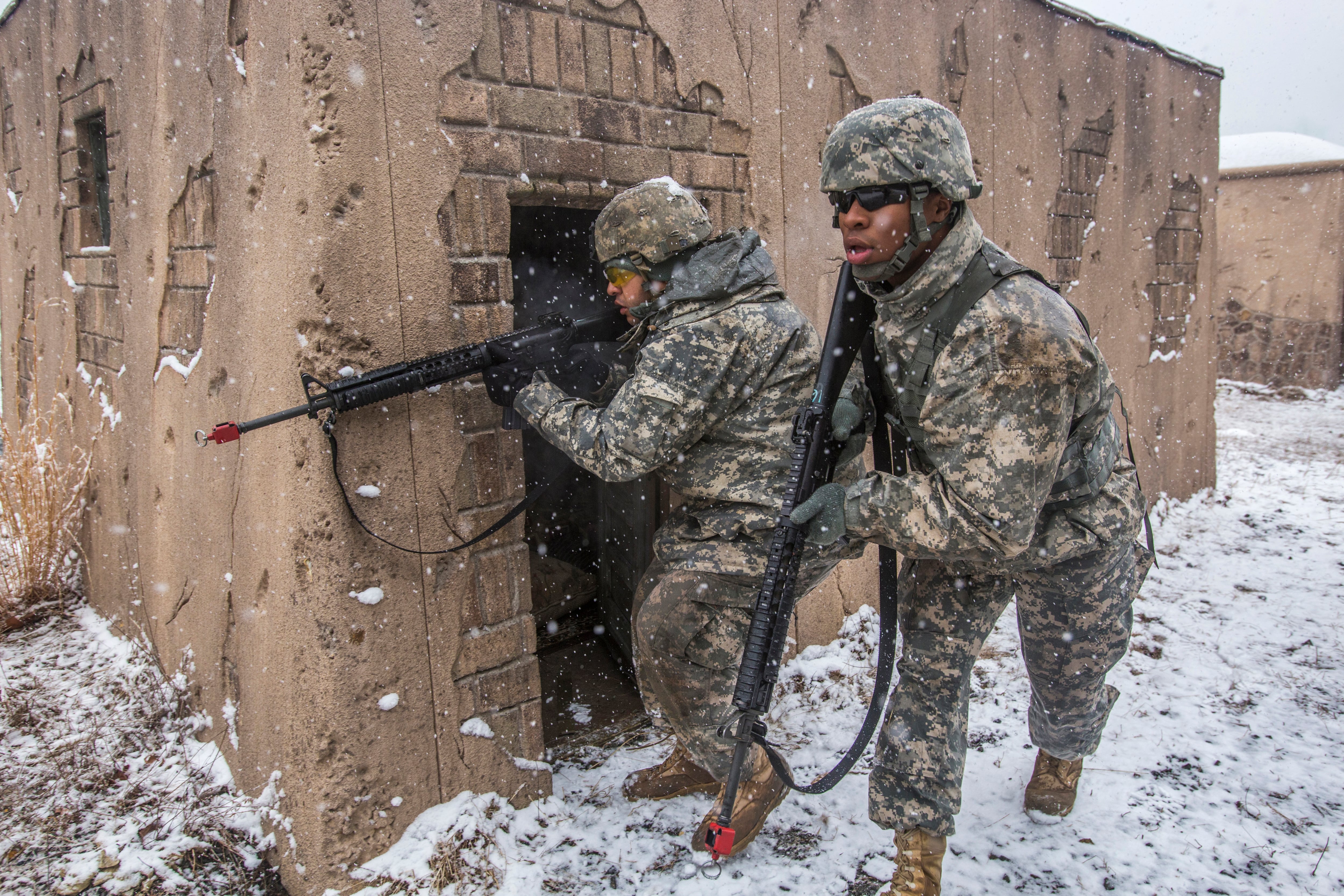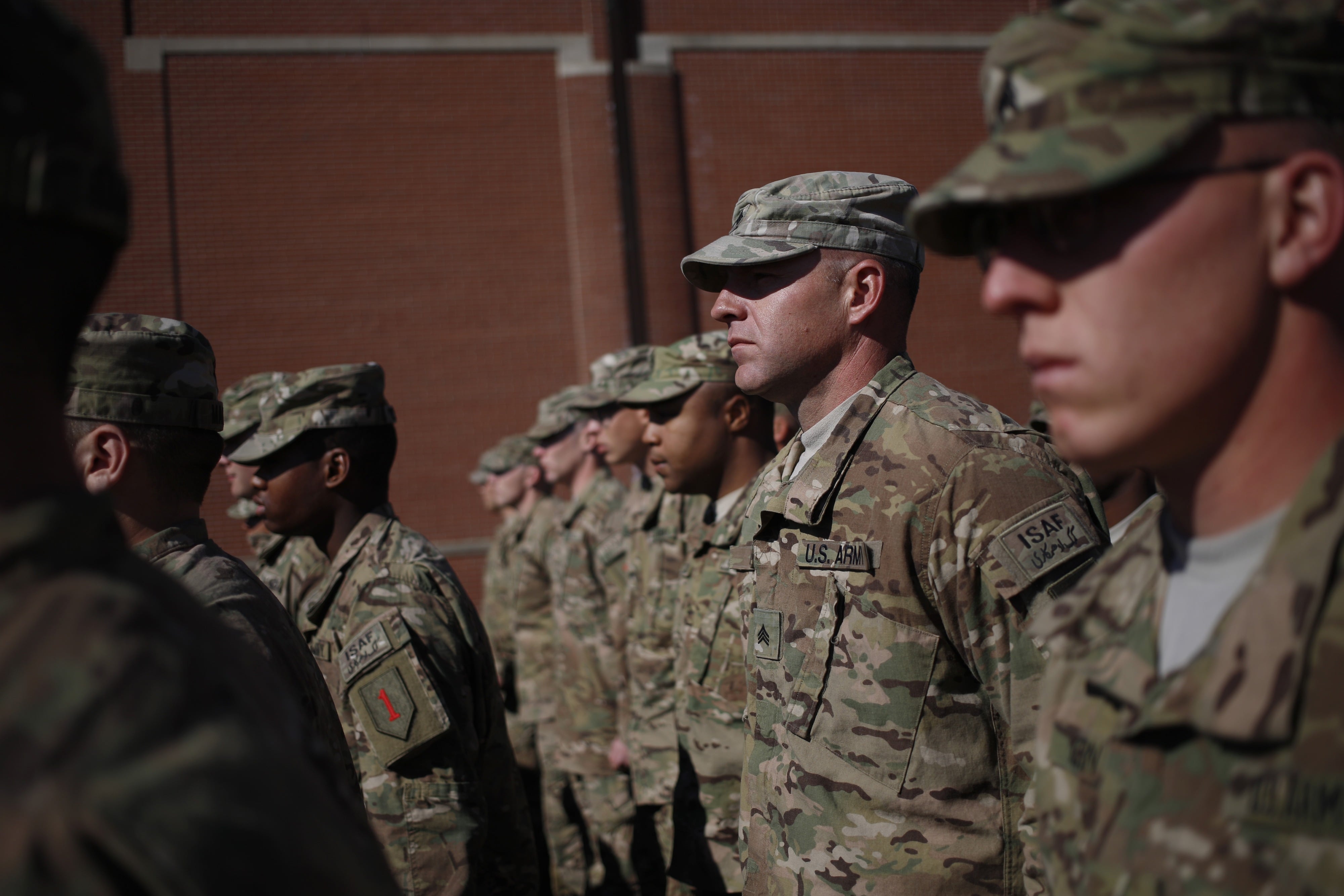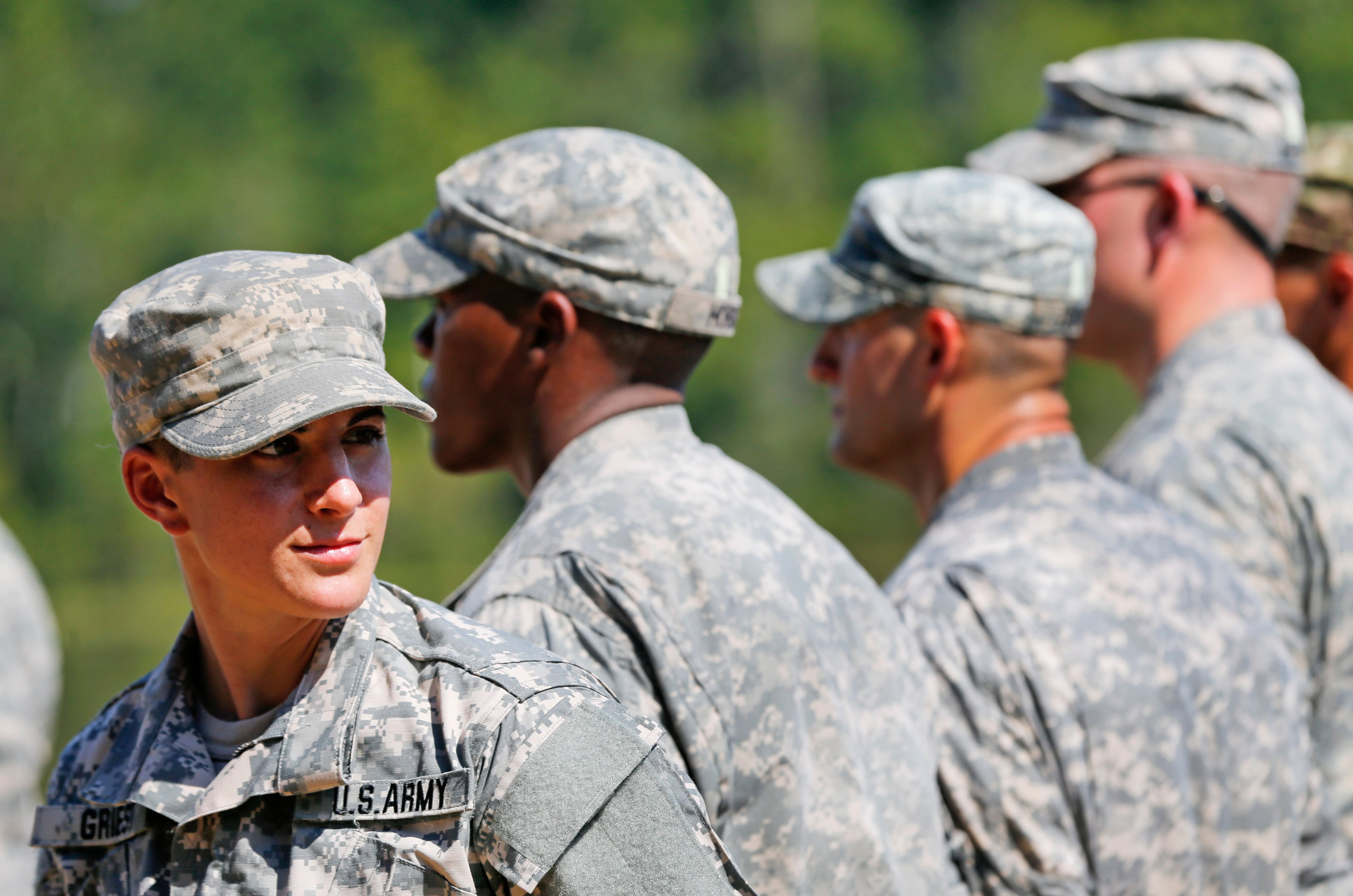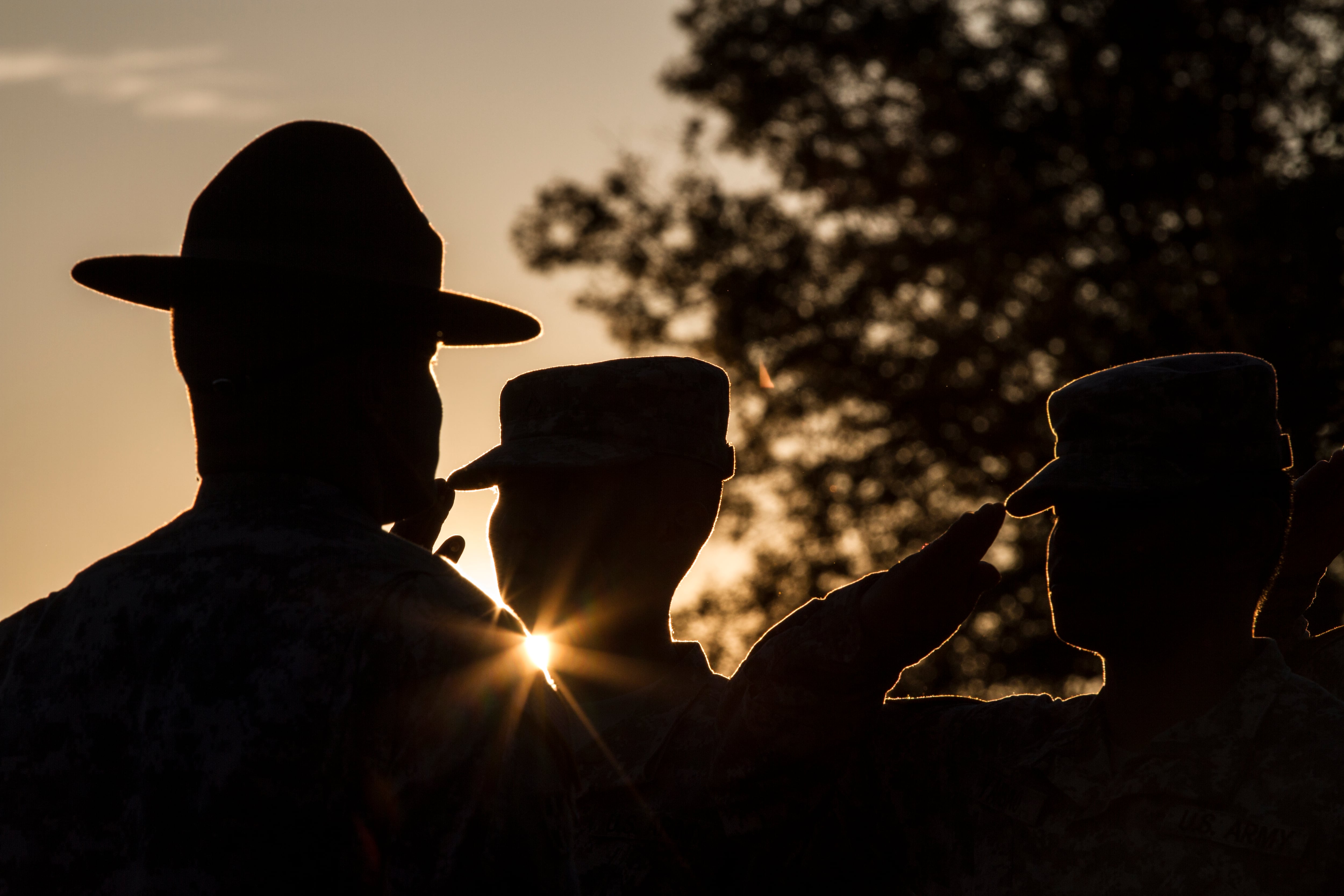Sergeant Major of the Army Dan Dailey has made some big moves in his first year as the service's top enlisted soldier, and he's just getting started.
Coming into the job in January 2015 at age 42 — making him the youngest SMA in Army history — Dailey already had a long to-do list, focusing on professional military education, readiness, robust training, physical fitness, and helping soldiers transition smoothly into civilian life.He's made advances on all these subjects, but in an interview with Army Times he outlines his new priorities sure to affect soldier lives and careers.
"We've still got a long way to go," the career infantryman said. "It reminds me I've got to keep myself in gear every day. How am I going to achieve the things I want to achieve in my tenure? Four years isn't as long as it seems."
As he enters his second year on the job, here's a look at Dailey's priorities for 2016.
1. Higher readiness achieved with fewer non-deployable soldiers.
To tackle readiness, the Army's No. 1 priority, Dailey is taking a close look at non-deployable soldiers.
"I want every soldier deployable in the Army," Dailey has said. "It's about building readiness in the United States Army, doing what's right, taking care of soldiers and getting them healthy — but cracking down on it, too."

Readiness is the Army's No. 1 priority. Part of that mission is reducing the number of non-deployable soldiers, SMA Dailey says.
Photo Credit: Master Sgt. Mark Olsen/Army
About 102,500 soldiers — active Army, Army National Guard and Army Reserve — are currently non-deployable, according to Army data. That's about 10 percent of the total force. Of those soldiers, about 50,000 are active-duty, 28,000 are in the Guard, and about 25,000 are in the Reserve.
About three-quarters of non-deployable soldiers are sidelined for medical reasons. This could be short-term conditions such as a soldier needing a root canal or soldiers who have not received their shots before a deployment, or longer-term issues such as a soldier who needs surgery to repair a torn ACL and the follow-on recovery time. This group also includes soldiers who have significant wounds, injuries or illnesses, such as a soldier who's fighting cancer or one who's lost a limb in combat.
Other reasons a soldier can't deploy include legal or administrative reasons. Not included in the group are the 105,000 soldiers who are in schools, training or transitioning between duty stations.
Officials told Army Times that the non-deployable rate is the lowest the Army has seen since 2011. But Dailey, who deployed three times for Operation Iraqi Freedom, believes the service can do better, especially as the force continues to get smaller because of ongoing budget cuts.
"The first message I want to send with this is we're going to take care of soldiers," Dailey said. "But we have to get focused on what soldiers do and what soldiers are for. Soldiers are here to fight and win our nation's wars when asked to do so. That's what we do. That's all the soldiers."
Dailey said he is "a realist."
"I know soldiers are going to be on profile," he told Army Times. "I'm not going to go after them, but we must get soldiers fit and ready."
To get after this issue, the Army is forming a working group, bringing together its personnel, medical and legal experts, to tackle the issue. Part of the group's work will be to review medical retention standards and take a look at the Integrated Disability Evaluation System and how it can run more smoothly, Dailey said.
At the end of 2015, more than 12,920 wounded, ill or injured soldiers were in some phase of IDES.
IDES, first launched in 2007, combined the separate Defense Department Veterans Affairs systems into one and was supposed to make the evaluation process simpler and quicker for troops who have medical conditions. However, the system was long plagued with lengthy delays and backlogs, leaving some soldiers in limbo for almost two years.
The military, including the Army, has since made progress. As of Oct. 31, the average time to complete IDES processing for active-duty soldiers was 216 days; the goal is 295 days, said Lt. Col. Jerry Pionk, an Army spokesman. The average processing time for reserve component soldiers was 258 days; the goal is 305 days.
In addition to the IDES, the Army also is looking at reclassification standards for soldiers who may want or need to switch MOSs, Dailey said.
"What is the minimum standard for soldiers to be at? What's the deployable standard?" he said. "The question, to me, is should you have to be deployable to be on active duty? Those are some of the rules and regulations we're looking at."
2. Incentive pay for deploying soldiers.
Dailey first floated this idea last fall as a way to encourage soldiers to remain fit, healthy and deployable.
Soldiers in places such as Iraq and Afghanistan rightly receive hazardous duty pay and other incentives, Dailey said. But the Army also is now sending more and more soldiers on non-combat tours that take them away from home.
Units are rotating into South Korea for nine-month tours. Soldiers are going on three-month Pacific Pathways exercises. They are training troops in Ukraine. They are spending time across Europe working with NATO allies as part of Operation Atlantic Resolve. They are conducting military-to-military exchanges throughout Africa.
"This is one of the things I want to do to incentivize our deploying soldiers," Dailey said about the proposed incentive pay. "Our soldiers do what we ask them to do. This is something I want to do because I feel soldiers deserve it."

Deployed soldiers should earn extra pay, SMA Dailey says.
Photo Credit: Luke Sharrett/Getty Images
The proposed pay would be similar to the Navy's sea pay or its new Hardship Duty Pay-Tempo.
Career sea pay is designed to reward sailors for time spent at sea, and it provides an incentive to sailors in the busiest seagoing jobs to stay in the service. The monthly sea pay can range from $60 to $750 for the most senior enlisted sailors; most junior enlisted qualify for $100 to $300 a month. Sea pay also is cumulative, meaning the amount of pay a sailor can earn increases with the amount of time they spend at sea.
The Navy and Marine Corps also last year began paying sailors and Marines Hardship Duty Pay-Tempo, which rewards those who deploy for long periods of time. The new deployment pay gives sailors and Marines $16.50 a day for every day they're deployed past 220 days, roughly seven and a half months.
A lot of work remains to be done on the Army's proposal, and it still must be approved by the Army staff and DoD and receive congressional support, Dailey said. But he plans to try and submit it for inclusion in the 2017 defense authorization bill, a goal he acknowledged is "pretty aggressive."
3. Right-sizing the Army.
Dailey is working to adjust retention control points for senior NCOs as part of an overall effort to make sure the Army draws down responsibly and retains the "most capable and eligible soldiers," he said.
Adjusting retention control points maintains promotion opportunities even as the Army gets smaller and "opens the aperture" for qualified mid-grade noncommissioned officers to get promoted more quickly, Dailey said.
RCPs are tenure limits for the Army's enlisted "up or out" system. Soldiers who reach the RCP for their rank before they are promoted may be involuntarily discharged or retired.
In the next two years, the Army is slated to shrink to an active-duty end-strength of 450,000, the Guard will cut 15,000 soldiers, and the Reserve will shed 10,000. These cuts, which have been going on since 2012, must be managed using tools such as retention control points, accessions, retention and STEP, Dailey said.
STEP, or "select, train, education, promote," is a new policy that requires soldiers to have the right level of professional military education before they can be promoted.
All of these measures enable leaders to downsize the force properly, Dailey said.
STEP is another tool to make sure the best qualified soldiers remain in uniform, Dailey said.
"We're going to be pretty focused on this for the fiscal year," he said. "There are going to be some struggles with STEP. This is not an addition to the previous promotion regulation. This is a complete change. Some people are going to have trouble adjusting to that."
4. Expand Tuition Assistance for credentialing opportunities.
Dailey is working "very aggressively and very rapidly" on this, he said.
He's asked senior Army leaders for help to secure permission to allow soldiers to use Tuition Assistance to pay for civilian-equivalent credentials.
"If you're an electrician in the Army, we train and educate you, and we'd like to credential you in the civilian market as well," Dailey said. "We do the same with truck drivers, welders. In some cases, MOSs are matched with civilian credentials."
Dailey is pushing for a change in the law that would allow soldiers to use Tuition Assistance to enroll in classes designed to prepare them for initial or recurring certification or licensing. Currently, TA can be used only for college preparatory classes.
"Currently you can't use Tuition Assistance to go after credentialing. You can use it for college, and if the credential is part of the program, you can use it," Dailey said. "I want to be able to open up Tuition Assistance for soldiers to find credentials to match their MOS."
He also is proposing to allow soldiers to use TA for non-government licensing or certification exams. Right now, TA can be used only for state certifications or licenses.
These changes, Dailey believes, will increase the TA benefit for soldiers who don't necessarily want to attend college and prepare more soldiers for their eventual transition into civilian life.
"We've got to get soldiers credentialed in their MOS," Dailey said. "We'll get a better soldier, and it gives them the skills to be successful when they transition from the Army."
Dailey's focus on credentialing is part of an Army-wide effort to make sure soldiers get credit for their skills and training. This includes a major push by Training and Doctrine Command to link credentialing opportunities to every single MOS in the Army.
Credentials help soldiers while they're in uniform – those competing for promotion to sergeant and staff sergeant can earn 10 points for each technical certification for a maximum of 50 points – as well as after the Army by giving soldiers hard-earned proof of their skills that is universally accepted by employers.
Soldiers can earn two types of credentials. The first is a non-Defense Department license, such as a commercial driver's license issued by a state government or a Federal Aviation Administration license. The second type is a certification from an independent, industry-recognized agency, such as the American Culinary Federation or the American Welding Society.
5. Grow Army University.
Dailey is working to grow Army University, a new program designed to improve soldier learning and eventually net soldiers more college credit in the process.
One major goal of Army University is to eventually produce universal transcripts that outline every soldier's training, education and experience in a language that can be easily translated by civilian colleges, universities and employers.
Administered by the Combined Arms Center at Fort Leavenworth, Kansas, Army University is not a brick and mortar institution. Instead, it organizes the Army's professional military education programs into a university system.
"The ultimate goal is we become a degree-producing agency while maximizing the amount of credit our soldiers get for the education they receive," Dailey said. "The Massachusetts Institute of Technology is an engineering school. Harvard is a law and business school. Army University should be known as a leadership school."
6. Successful integration of women into combat jobs.
This is a direct task from Army Chief of Staff Gen. Mark Milley, Dailey said.
The senior enlisted soldier has been tasked with being the "standards and discipline bearer when it comes to gender integration," he said.
Defense Secretary Ash Carter on Dec. 3 announced his decision to lift all gender-based restrictions on military service. This means all jobs in the Army, including infantry, armor and special operations, are open to women.
The Army is waiting for final Defense Department approval to execute its implementation plan to integrate these previously closed jobs.
The decision to open these jobs has been controversial, as was an earlier decision by the Army to open its storied Ranger School to female soldiers. Many soldiers have voiced their disapproval and concerns about unit cohesion and lowered standards.

The integration of women in combat jobs is a top priority for SMA Dailey.
Photo Credit: John Bazemore/AP
Dailey said the Army worked hard and methodically as it studied whether to open combat jobs to women, including conducting tests at installations such as Fort Hood, Texas, and Fort Bragg, North Carolina. It also has a detailed plan to integrate women into these all-male specialties, and leaders are committed to ensuring no standards are lowered in any way, Dailey said.
"You're not going to convince everybody [the standards aren't lowered], but that's not our job here.," Dailey said. "It's our job to fight and win when asked to. Whether you believe it or not, it doesn't matter. It's whether we do it or not."
Michelle Tan is the editor of Army Times and Air Force Times. She has covered the military for Military Times since 2005, and has embedded with U.S. troops in Iraq, Afghanistan, Kuwait, Haiti, Gabon and the Horn of Africa.





